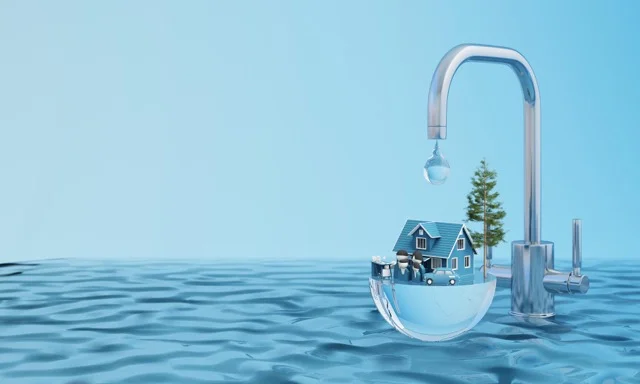Reclaim Waste Fundamentals Explained
Reclaim Waste Fundamentals Explained
Blog Article
Reclaim Waste for Beginners
Table of ContentsThe 5-Minute Rule for Reclaim WasteThe smart Trick of Reclaim Waste That Nobody is Talking AboutExcitement About Reclaim WasteThe Reclaim Waste DiariesThe Ultimate Guide To Reclaim Waste
Domestic sewer waste refers to the waste and items from a domestic septic storage tank. The correct administration and disposal of domestic sewer waste call for liquid waste to be moved to a sewer treatment plant where the appropriate techniques and equipment are used to purify and dispose of waste.
Business waste commonly includes prospective risks, such as flammable products or a combination of fluid and strong waste products, and requires an extra sophisticated and in-depth disposal process. The disposal of commercial waste normally entails the filtration of waste before transportation to guarantee secure and proper disposal. Industrial waste is produced from results and overflow of industrial processes and production.
This sort of waste can not utilize the very same sewer management transport or processes as septic or commercial liquids. The hazardous waste administration procedure requires the evaluation and testing of fluid waste before it undertakes the disposal procedure (liquid waste removal melbourne). Overflow waste is the fluid waste that originates from overflow and excess stormwater in very populated locations or cities
Overflow waste can trigger contamination and flooding if not managed correctly. Making certain appropriate waste management can stop disasters and minimize environmental damage.
Everything about Reclaim Waste
Call PROS Services today to discover our waste administration and disposal services and the correct means to look after the fluid waste you create.
(https://fliphtml5.com/homepage/kekhp)This so-called 'wastewater' is not only a crucial resource however, after therapy, will be launched to our land, waterways or the ocean. Used water from commodes, showers, baths, cooking area sinks, washings and commercial processes is understood as wastewater.

water utilized to cool down machinery or tidy plant and equipment). Stormwater, a type of wastewater, is overflow that moves from farming and urban areas such as roofs, parks, yards, roads, courses and gutters into stormwater drains pipes, after rain. Stormwater streams unattended straight to neighborhood creeks or rivers, at some point getting to the sea.
Some Ideas on Reclaim Waste You Should Know
In Queensland, many wastewater is dealt with at sewage treatment plants. Wastewater is transported from domestic or industrial sites via a system of drains and pump stations, referred to as sewerage reticulation, to a sewer treatment plant. Neighborhood federal governments develop, preserve and operate most sewage treatment plants. Operators are accredited under the Environmental Management Act 1994 to release cured wastewater at an appropriate environmental criterion right into waterways.
The Department of Natural Resources recommends regional federal governments regarding managing, operating and preserving sewerage systems and therapy plants. In unsewered areas, city governments may require owners to mount private or household sewage treatment systems to treat domestic wastewater from commodes, kitchens, bathrooms and laundries. The Department of Natural Resources authorizes the use of home systems when they are verified to be reliable.
In some brand-new communities, therapy of some stormwater to eliminate litter, sand and crushed rock has started utilizing gross pollutant catches. Wastewater therapy happens in four phases: Removes strong matter.
Wastewater after that flows right into large containers where solids settle and are removed as sludge. Oil and scum are skimmed from the surface area. Utilizes tiny living microorganisms called micro-organisms to break down and get rid of staying liquified wastes and great particles. Micro-organisms and wastes are included in the sludge. Removes nitrogen and phosphorus nutrients that can trigger algal blossoms in our waterways and intimidate marine life.
Getting The Reclaim Waste To Work
Nutrient elimination is not available in any way sewer treatment plants since it look at here now needs pricey specialised devices. It is ending up being more typical in Queensland. Clear fluid effluent generated after therapy might still include disease-causing micro-organisms. If this effluent is released into waterways such as rivers or the sea, the micro-organisms will eventually die out.

Many wastewater moves right into the sewerage system. Under the Act, local federal governments administer approvals and licences for environmentally appropriate tasks (Periods) involving wastewater launches that could have a local influence.
Some Known Incorrect Statements About Reclaim Waste
Or else, samples are considered laboratory analysis. Frequently several tests are needed to develop the levels of each of the different toxins such as oils, heavy metals and chemicals in water. Monitoring offers accurate information regarding water top quality and can validate that licence conditions are being satisfied. The details obtained with surveillance provides the basis for making water quality decisions.
Report this page